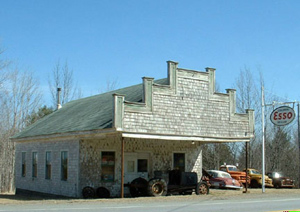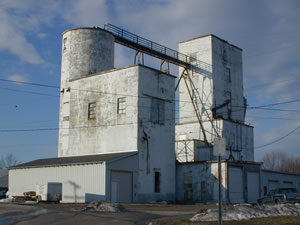Architecture 1900-1939
In the early 1900s, architecture in Northwest Franklin County changed a lot. Because of better transportation, newer and better building materials could be brought to the area. Instead of wood, homes could now be built with brick and steel. Those who could afford it built much larger homes than earlier ones.
The Northwest area of Franklin County began to grow with new housing developments spreading from the center of small towns. New streets were constructed and many were named after well-known people of the time.
Government rules on building also made structures safer and longer lasting. Many of the buildings constructed in this time period are still standing today.
The American Four Square was a very popular style of home built in the area in the early 1900s. The house was large, and usually had a porch on the front. The roofline was sloped on all four sides (called a hip roof.) These homes were built of brick or wood.
 The invention and popularity of the automobile required new types of buildings—garages and gas stations. Early garages were separate from homes, usually built behind them. Today, most garages are attached to the home. Long ago a town might have only one or two gas stations. Now gas stations are found nearly everywhere.
The invention and popularity of the automobile required new types of buildings—garages and gas stations. Early garages were separate from homes, usually built behind them. Today, most garages are attached to the home. Long ago a town might have only one or two gas stations. Now gas stations are found nearly everywhere.

As businesses came to the area, buildings with new purposes were constructed. A grain elevator that still stands today was once a busy place where farmers bought and sold their grain. Because of the danger of fire, the structure was built mostly from brick and steel.
Inside, homes and businesses were becoming more advanced as well. The invention of electric light bulbs allowed homes and businesses to be used well into the night. Electricity made work easier and helped Northwest Franklin County grow even faster. Indoor plumbing meant no more trips to the outhouse! Underground pipes took dangerous sewage away from where people lived and worked. This was much healthier for everyone.
More Information & Primary Sources
- Primary
- Articles
- Image
- Charts
- Artifact
- Link
- Map
References
Overview compiled by Bill Wheeler

